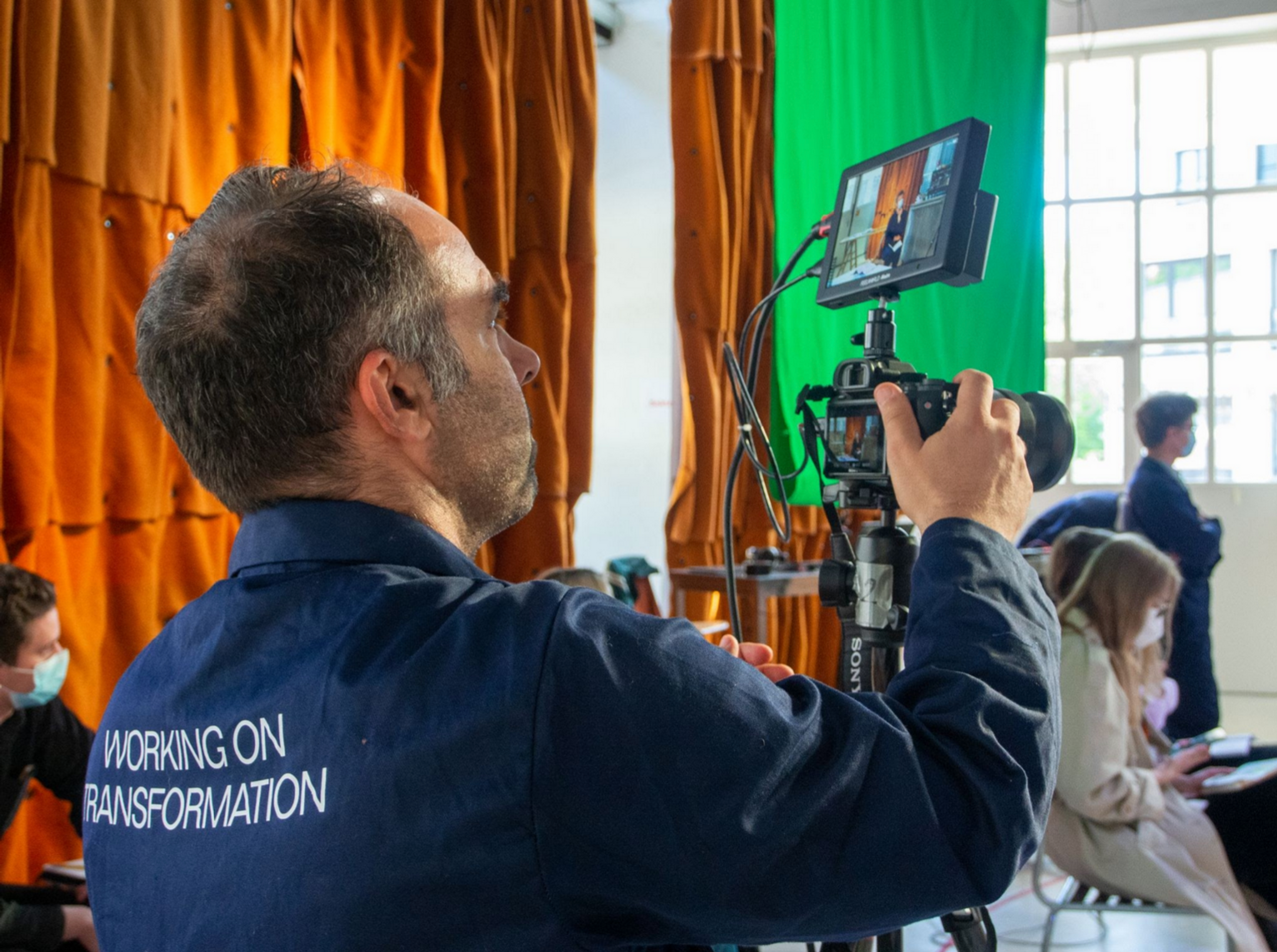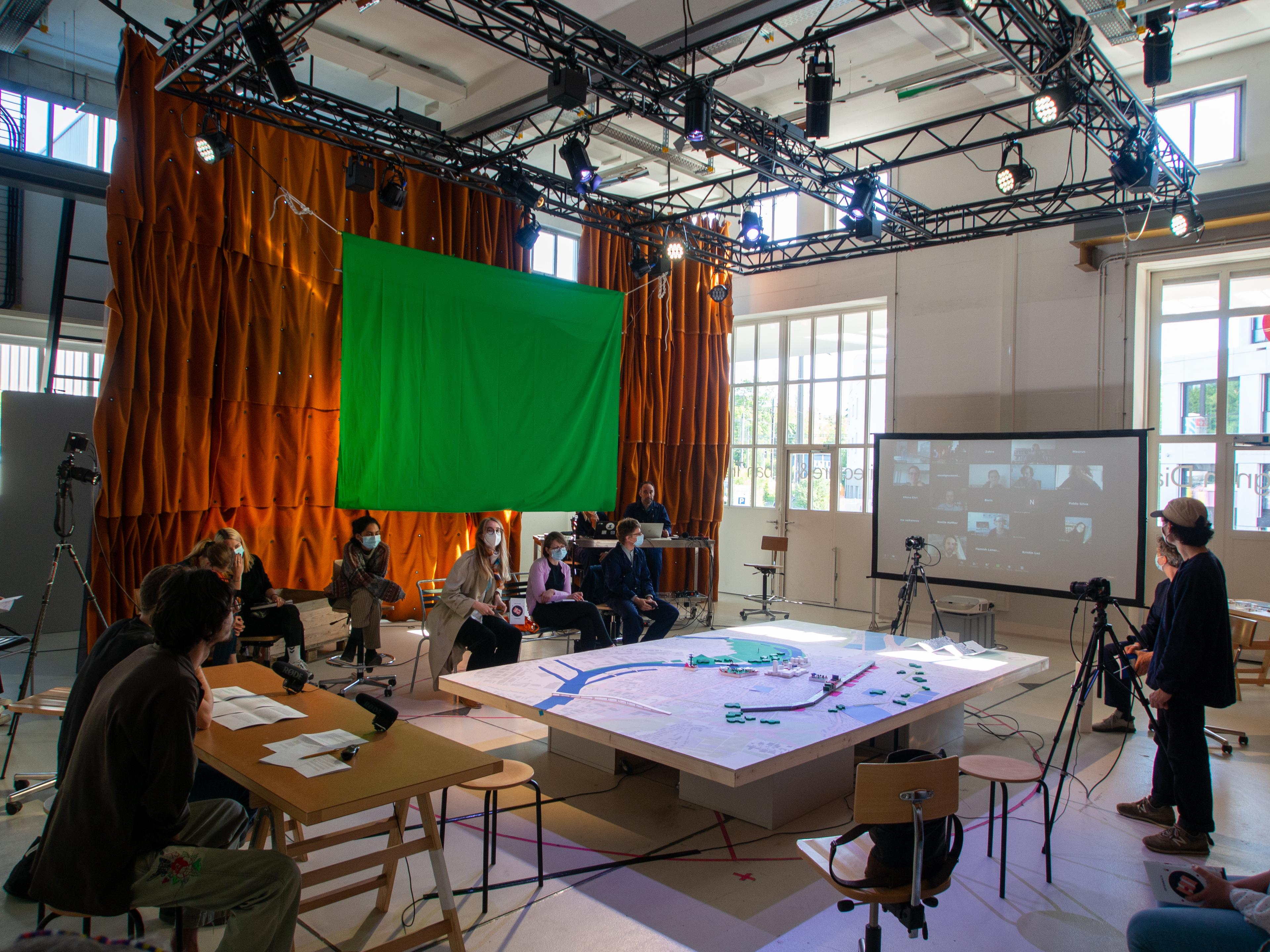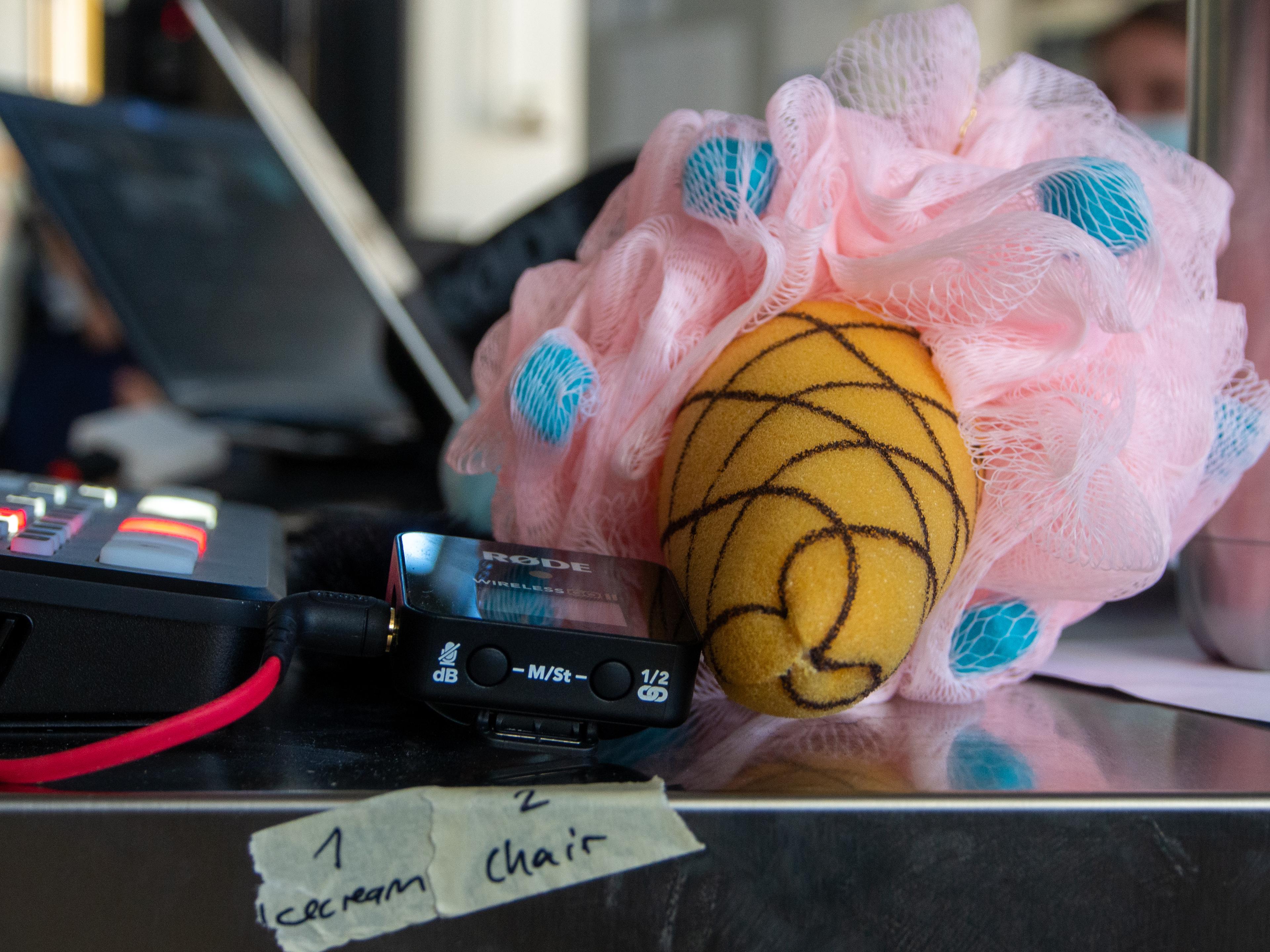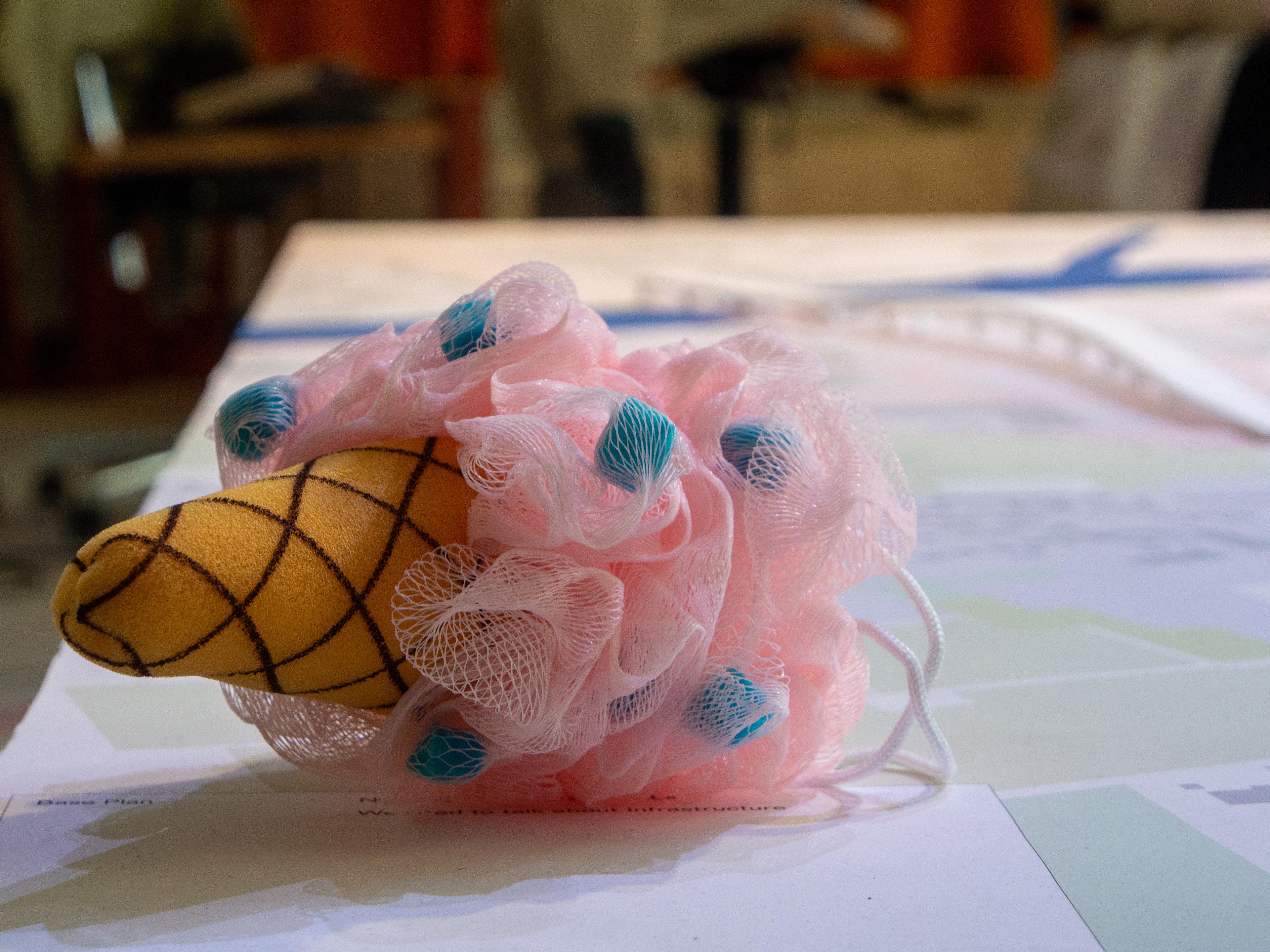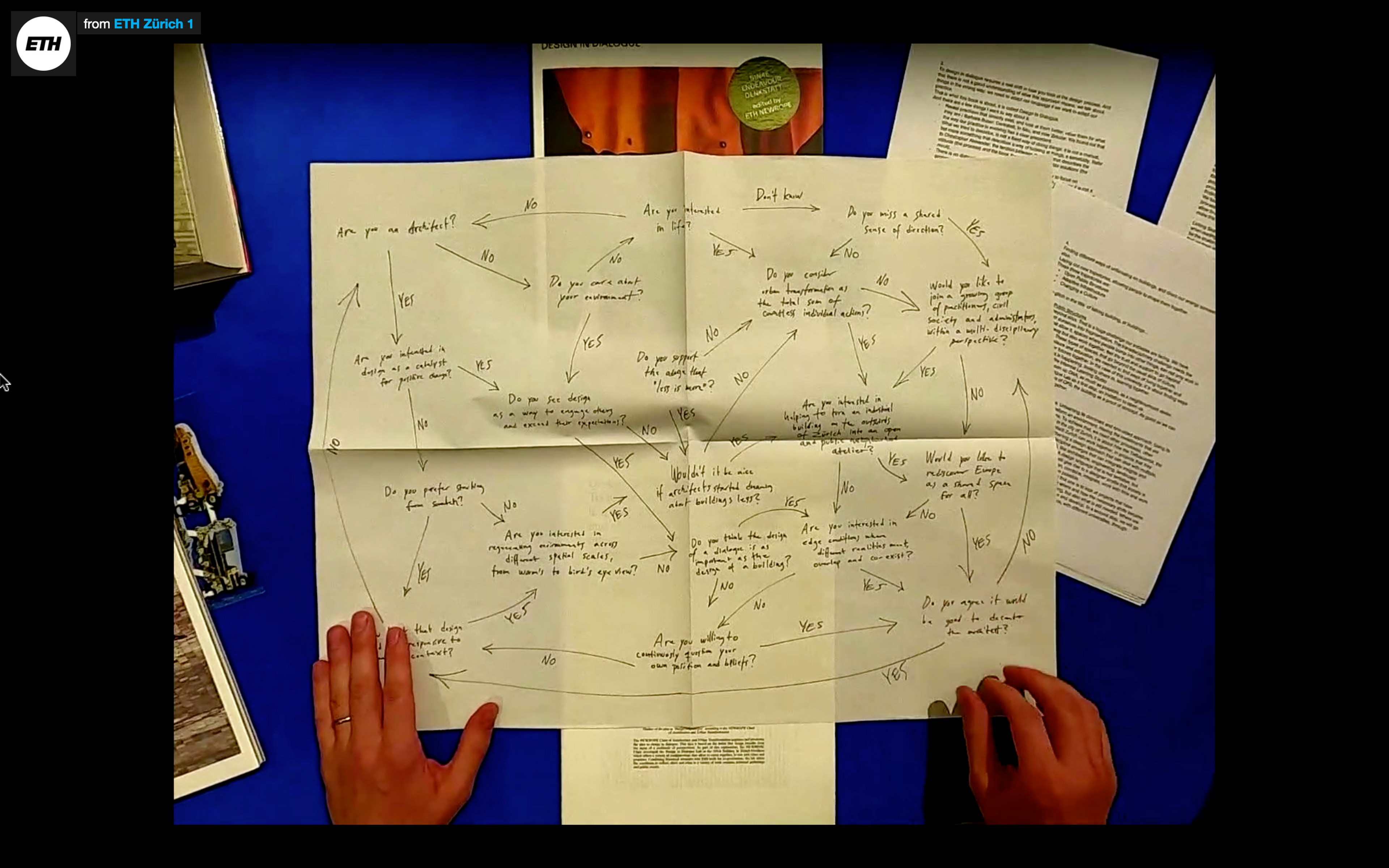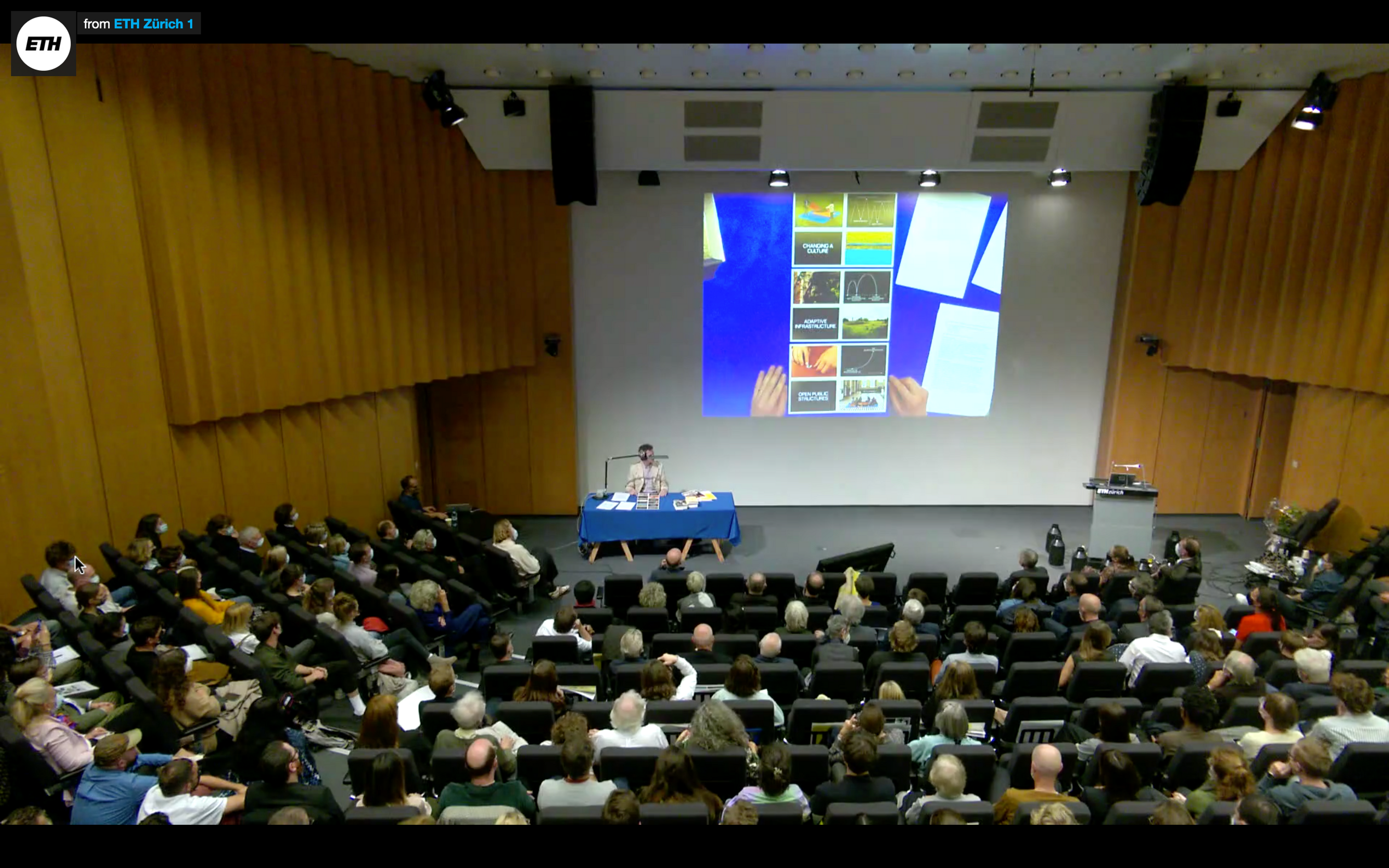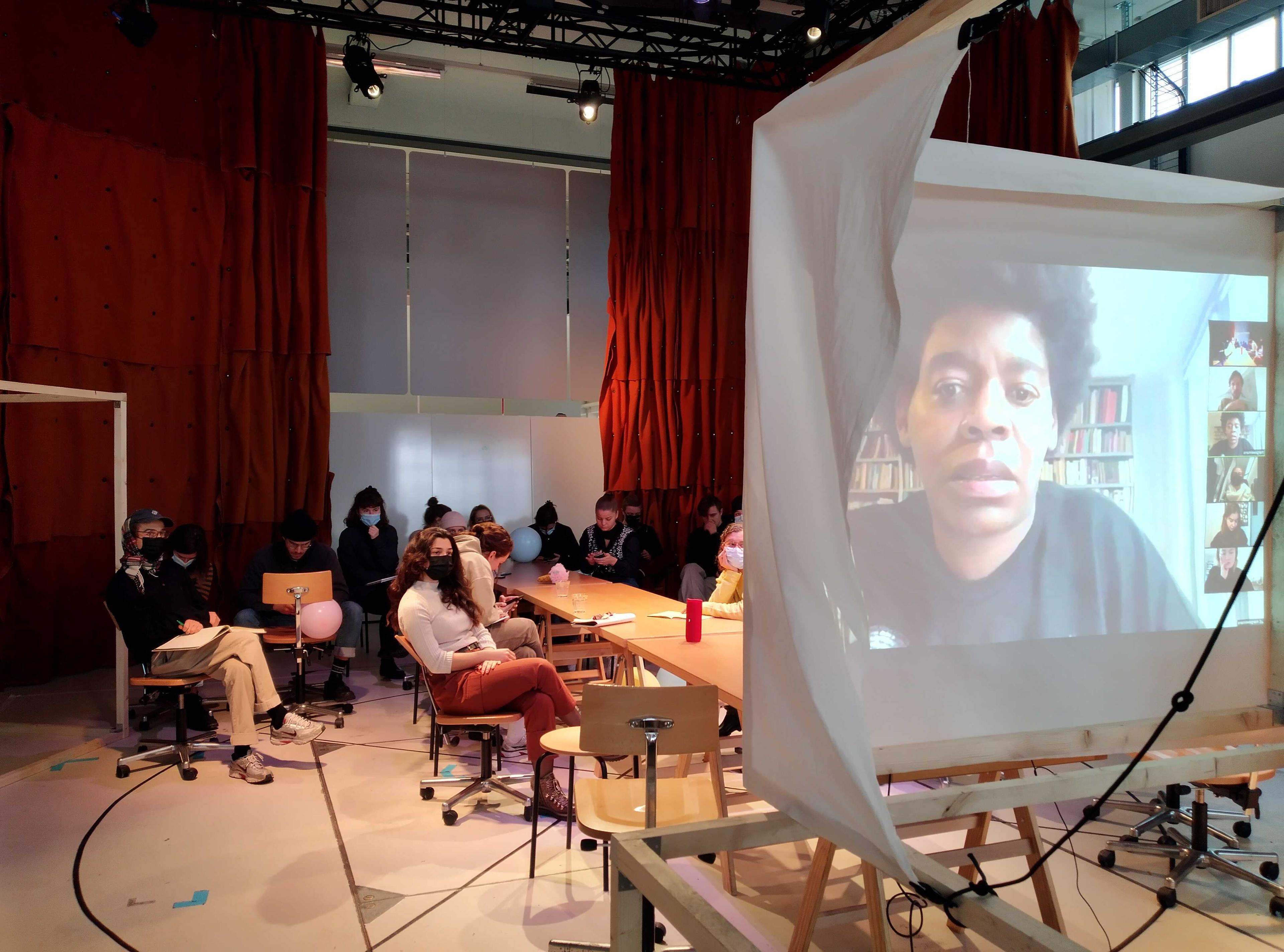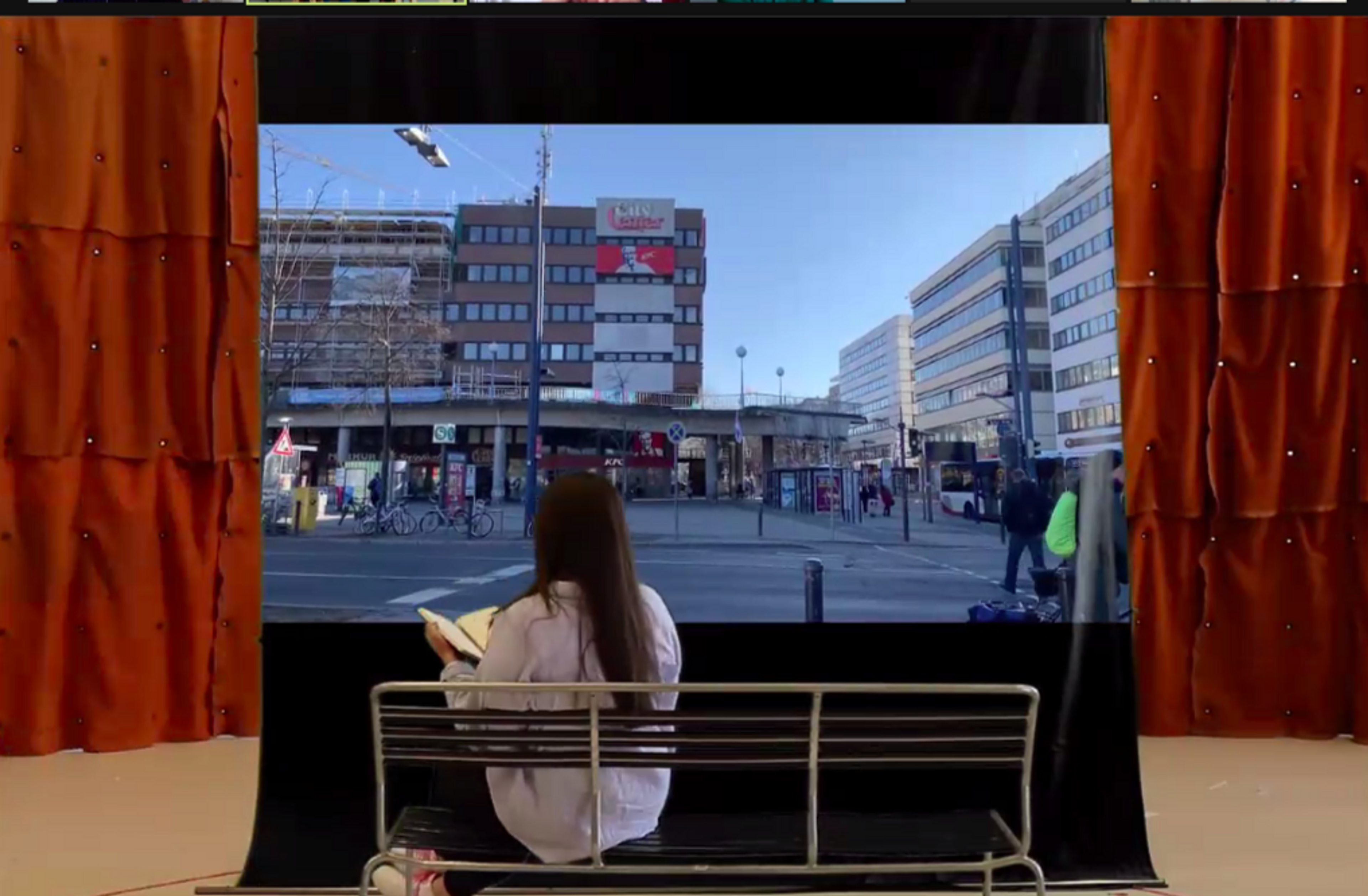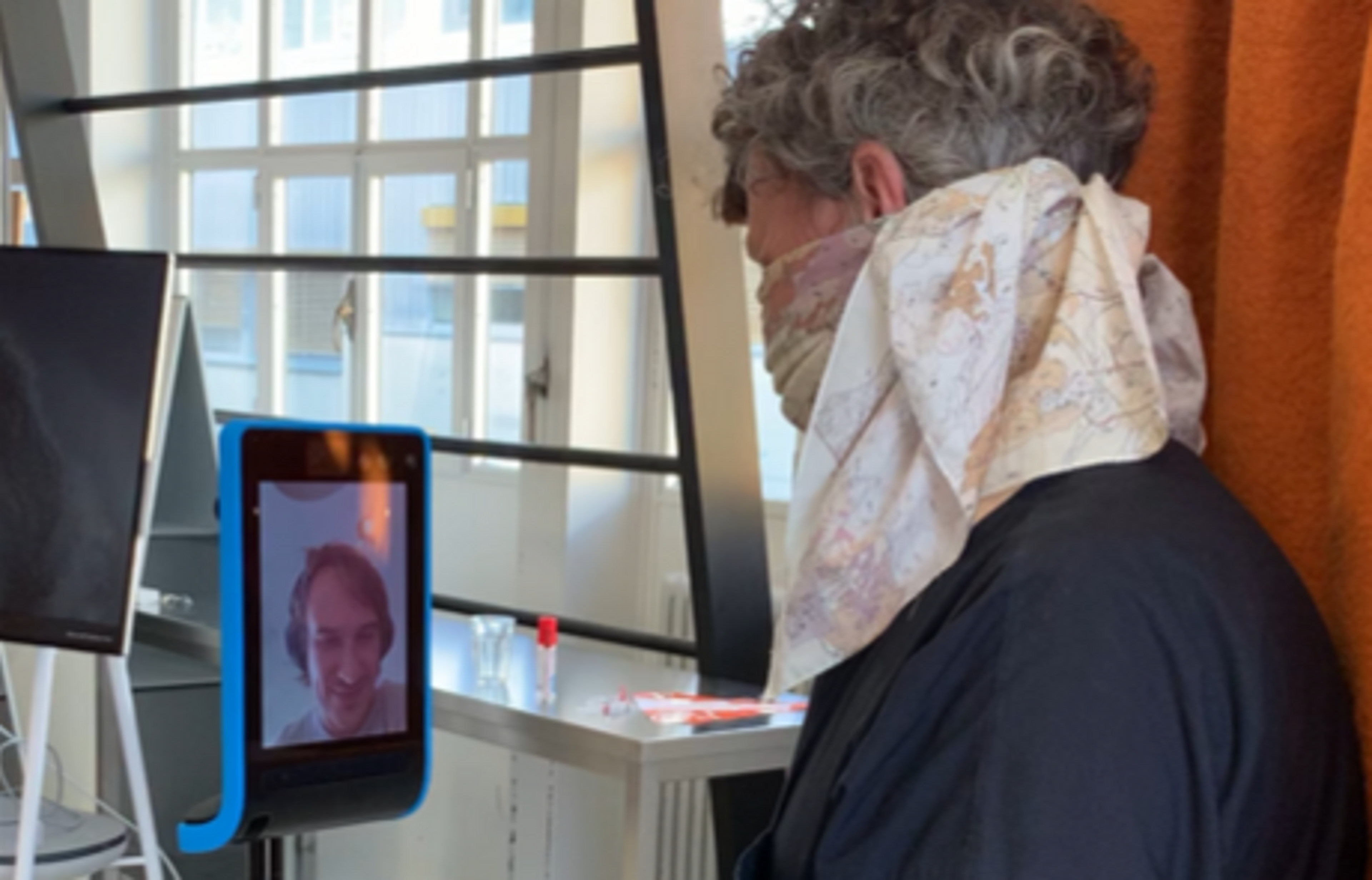Design in Dialogue Lab - Hybrid Encounters
The covid crisis brought the concept of a hybrid gathering, combining the physical and digital presence of participants, into the mainstream. Most conferences, workshops, and other events nowadays are hybrid, offering new opportunities to increase participation and interaction. The pandemic accelerated this development started out of a necessity, but is likely to stay with us in the years to come. Therefore, with the end of most lockdowns, the time has come to reflect.
What we have learned from multiple hybrid experiments organized by the NEWROPE chair is that a hybrid event can be more than just showing a Zoom meeting on a screen, but that setting up a TV studio for capturing discussions, movements, and the overall atmosphere of an event, is not enough by itself to truly engage participants who are not all present in the same physical space. Here we want to share some of the tools we tested and insights we gained.
Hybrid events are complex and involve different design elements, spatial configurations, technological tools and combinations of them. They raise a range of questions and allow for different options. For example, you need to decide what a remote audience can see on their screens and hear over their speakers, whether and how remote participants can intervene, what the onsite audience sees and hears, and how on-site participants are interacting with others present in physical and virtual space.
But how to create the right balance between the digital and the physical interactions, how this whole experience is documented from the “outside”, and what happens if on the other side of the screen there is another hybrid space with many people in the same room trying to communicate.
These and other questions of an exciting field of experiment and critical reflection for architects, designers, software developers, multimedia engineers, psychologists, facilitators, and more. Starting from the Design in Dialogue Lab, a space we share inside the ONA building in Zürich Oerlkon,we are building a network of similar spaces and people that are interested to experiment and learn from each other.
Here are a few examples of lessons learned from hybrid encounters that we organized in the context of NEWROPE’s activities, across different physical and digital environments.
Trying to organize the final presentation of the Offenbach design studio, with all guests from the Offenbach city participating online, and all students presenting their work physically from our Design in Dialogue lab in Zurich, would require a very complex TV studio setup with multiple technicians, which would be both expensive and intimidating. Instead, we experimented successfully with spreading light and easy to use equipment around the space, engaging the students themselves to document the moment and turn the cameras in the right direction, switch between cameras, use the microphones where needed, and more. A very empowering and playful experience, through which we learned a lot.
For his inaugural lecture at ETH Zurich, Prof. Freek Persyn did his presentation through a performative lecture, where a live and online audience could watch him browsing through books, cards, and magazines representing his work. The typical visualizers that are used in the university’s classroom wouldn’t allow for the type of free movement that this performance required and are also not aesthetically pleasing. It was not only the actual “content” that was shown that was of importance but also the image of the whole performance itself.
For this, transforming the “Tolomeo” lamp by Michele Di Lucchi into a hybrid device, and being able to film the action on the table but also create a “natural” scene of a person reading behind a table, was a very successful experiment. The hybrid lamp we developed for this occasion is today one of our main tools for hybrid encounters as part of our design studios.
We have also experimented with different types of displays and interfaces to create hybrid situations:
1) a telepresence robot allowed our guests to roam around the Design in Dialogue Lab independently and informally and address individual students or only a part of the group, with the drawback that there are still technical issues with such devices, and they might attract too much attention;
2) a green screen to create links to remote places with the drawback that those physically in the space cannot see the hybrid online representation.
3) a textile to bring remote guests “in the room” though less rigid and cold than big screens, with the drawback that it is less compact and does not scale easily for more than on or two participants.
The level of detail highlighted in the aforementioned examples shows how interesting and complex the design space of hybrid encounters is. Please contact us if you would like to experiment and learn together. We are especially interested in spaces that would like to co-organize events that are hybrid on both sides.

